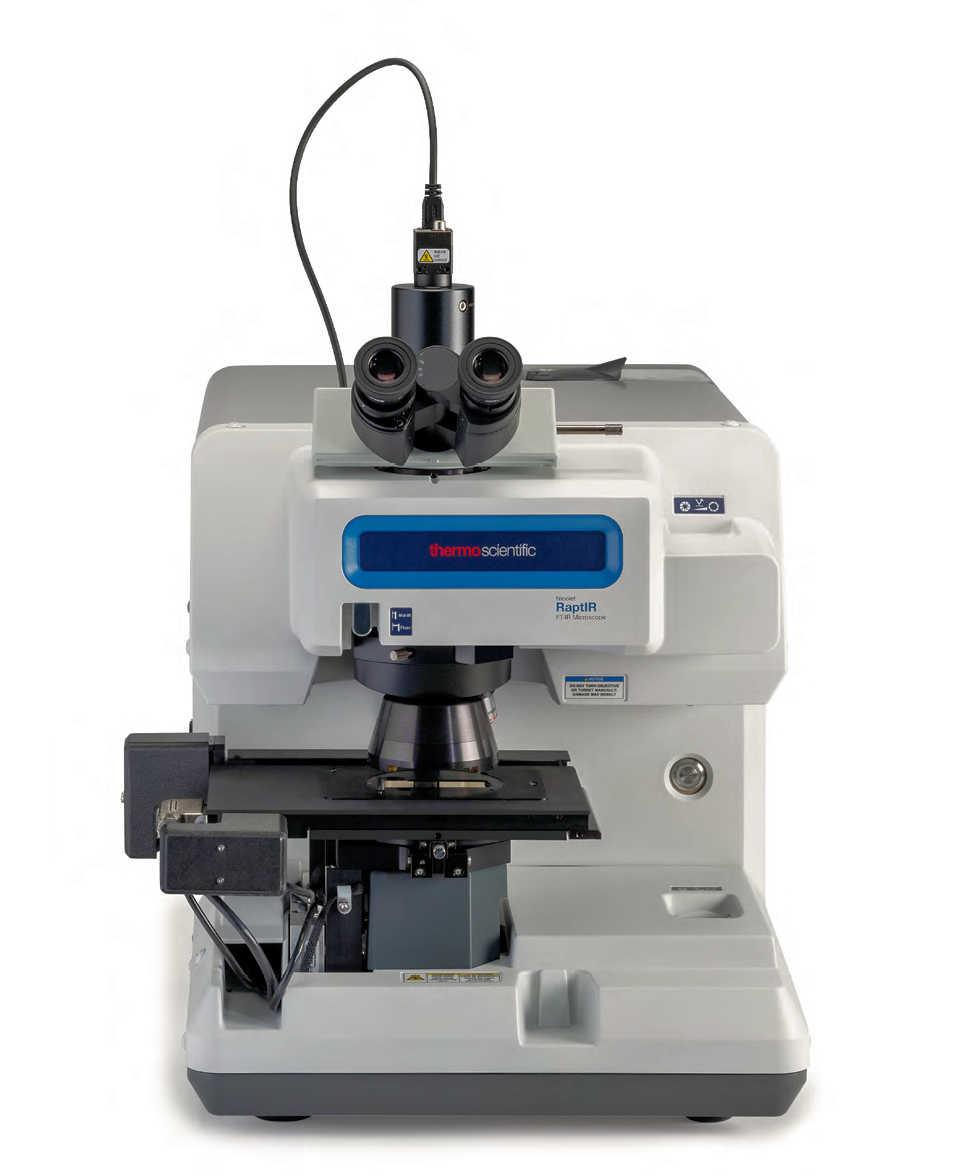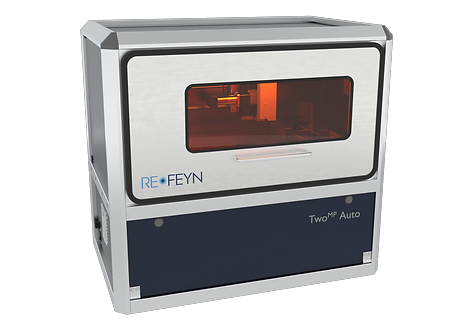Product Updates in FTIR Microscopy and Mass Photometry for Particle Imaging and Analysis
A flurry of new products has launched to meet the needs for molecular imaging and analysis research
FTIR Microscopy for surface and particle analysis
Thermo Fisher Scientific has introduced the Nicolet RaptIR FTIR Microscope for high-spatial resolution visual and infrared imaging. The multifunctional instrument is designed to enable researchers of various experience to quickly located areas of interest, and generate accurate results with minimal time and effort.
The Fourier Transform Infrared (FTIR) spectroscopy microscope (shown right) allows visualization of trace materials, inclusions, impurities, and microparticles, along with particle distribution within samples. An enlarged stage and working area allow a variety of sample sizes and dimensions to be examined. The diversity extends to the range of applications, which include pharmaceuticals, forensics, materials authentication.
Two of the biggest attributes of this FTIR microscope is the speed and accuracy of analysis. The instrument has 40 millimeters of vertical travel and 5-kilogram capacity, allowing large samples to be viewed with minimal sample prep. Once in place, the 4X and 15X objectives allows points of interest to be zoomed in to the micron level. Visual polarizers and infrared (IR) polarizers permit display in further detail. The 5-megapixel camera generates sharp images. Integrating with the Thermo Scientific OMNIC Paradigm workflow software provides a new, adaptive interface for simplifying and improving research applications.
The system is ideal for rapidly scanning materials for areas of interest - and then zeroing in and focusing on details at the micron level – exploring the sample while collecting data along the way.
Mass Photometry for molecular characterization
Refeyn, a pioneer in mass photometry, has released two devices for particle and virus analysis aimed to overcome the challenges of traditional techniques. Mass Photometry is a biophysical technique that enables measurement of molecular masses at the single-particle level. Quantitation is provided by light-scattering from biomolecules in solution. Traditional techniques for these applications, such as transmission electron microscopy (TEM) are overly laborious and resource intensive, requiring excess space, sample, and user knowledge of complex instrumentation.
The Samux mass photometer is designed for applications in gene therapy, biopharma, and virus-based therapeutics. Adeno-associated-virus (AAV) is a common viral vector used in gene therapy and vector-based therapeutic delivery. The Samux is intended to provide a rapid and cost-effective method for determining empty/full capsid ratios, improving accuracy and efficiency of downstream virus titer and therapeutic production processes.
The benchtop instrument produces results in less than 5 minutes using very small sample quantities, with very low operating costs. It comes with AAV-specific software and is easily accessible to a range of lab operators and staff.
The TwoMP Auto mass photometer, also from Refeyn and shown right, is built for the automatic loading and analysis of biomolecular samples at the single-protein level. This new release builds off of the previous TwoMP instrument by automating the process of single-particle, single-protein characterization.
Using mass photometry, the TwoMP instrument measurement of molecule mass of single particles, rapidly, in solution, and using minimal sample. Mass photometry has multiple benefits over alternative techniques such as TEM, mass spectrometry, or surface plasmon resonance, in that sample prep is minimize and measurements ore obtained in native-like state without the use of labels.
The TwoMP Auto integrates a liquid handling robot, which can run up to 14 samples per hour, thereby increasing throughput and freeing up operator time. Importantly, the instrument produces superior sensitivity and reproducibility making it well-suited for applications such as antibody production, quality control, titrations, and screening assays – processes which require high-quality and high-precision samples. The system uses the Refeyn Acquire software, a complete solution for experimental setup, data collection, and results analysis and visualization.
Summary
All three of these new products are aimed at high-resolution molecular imaging. FTIR microscopy has emerged as a preferred technique for materials analysis due to is ability to rapidly scan and visualize features of interest. The new instrument described above brings versatility into the picture, allowing a wide variety of samples to be analyzed with advanced image capture and processing capabilities.
Mass photometry escapes many of the challenges of traditional techniques, and finds applications in processes that require high-quality and highly-precision molecular formulations, such as antibodies and protein therapeutics. The new releases mentioned above bring sensitivity and automation to the benchtop, increasing the throughput and reproducibility of multiple analysis without sacrificing analytical power.
Visit LabX to view FTIR Microscope and Particle Characterization listings










